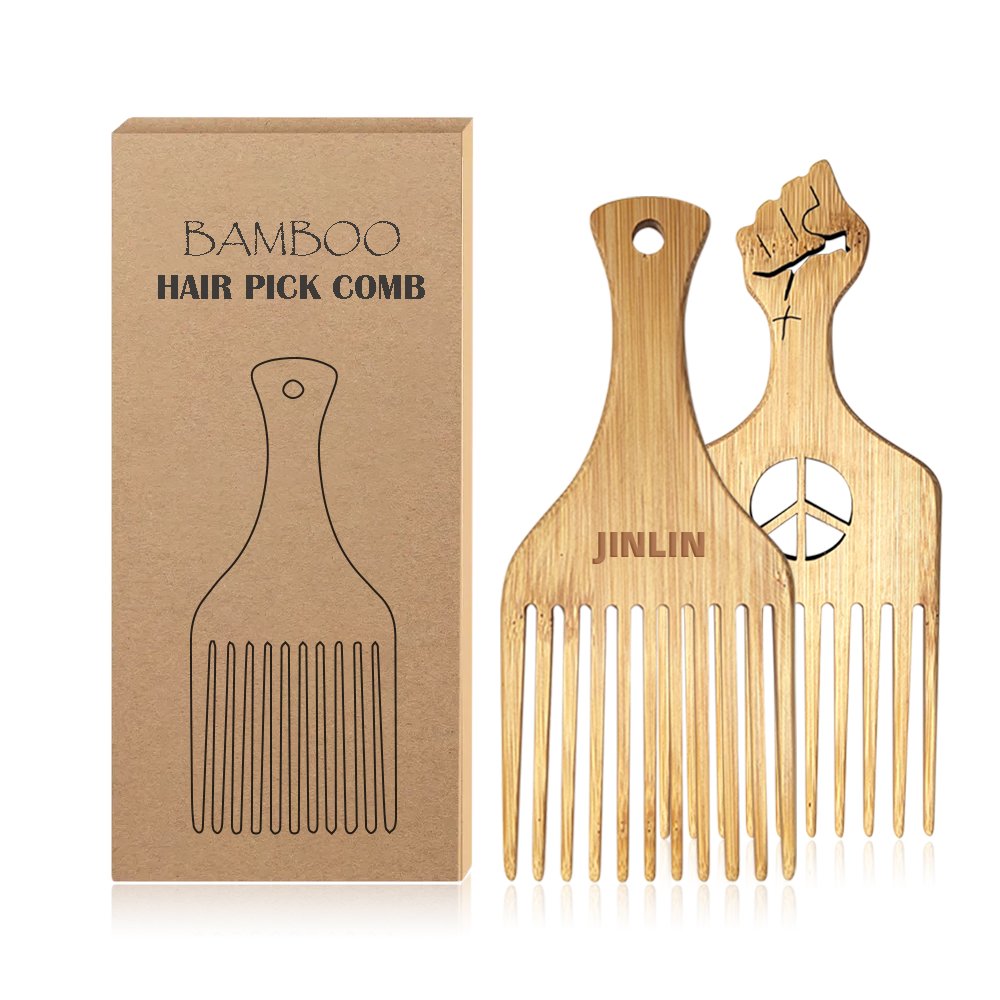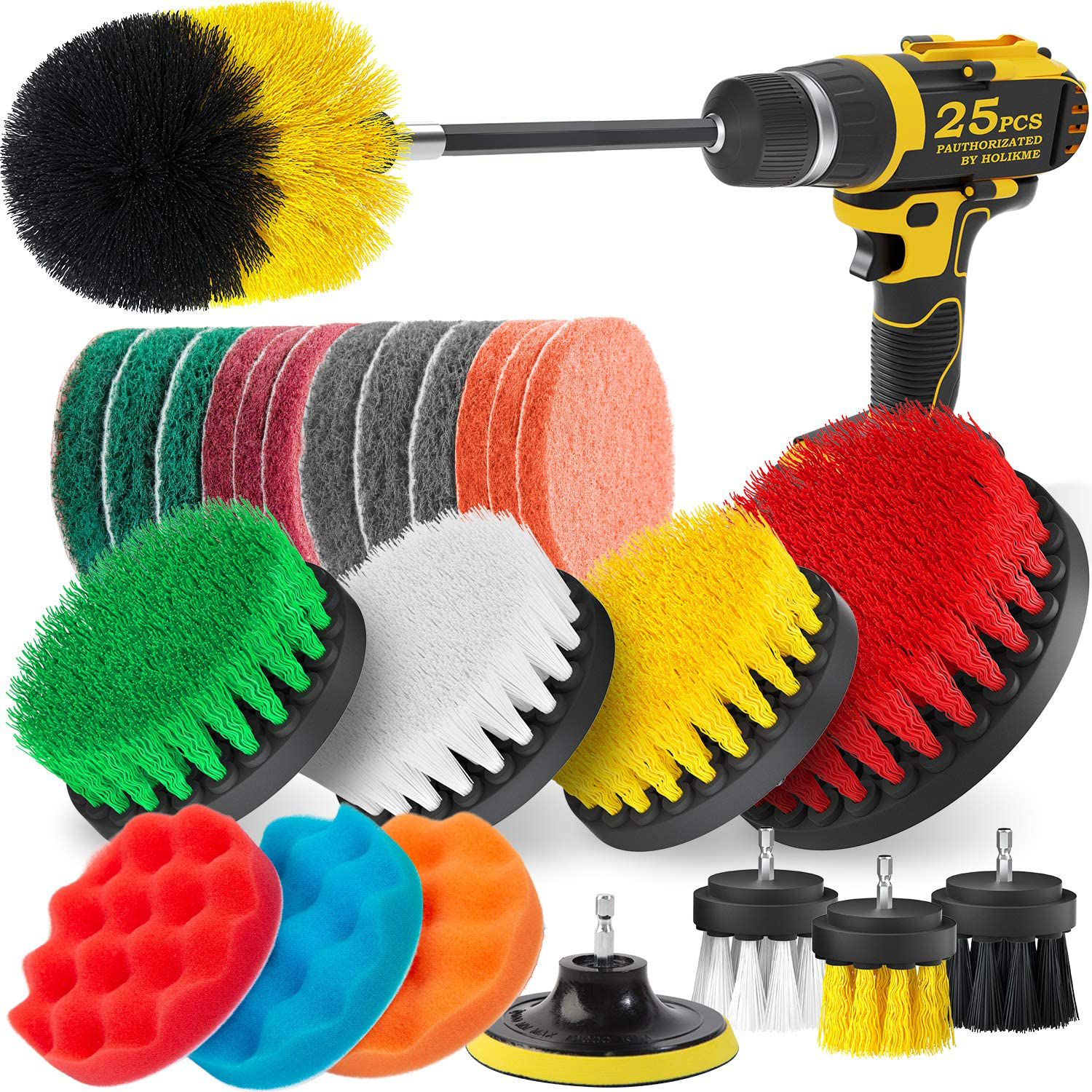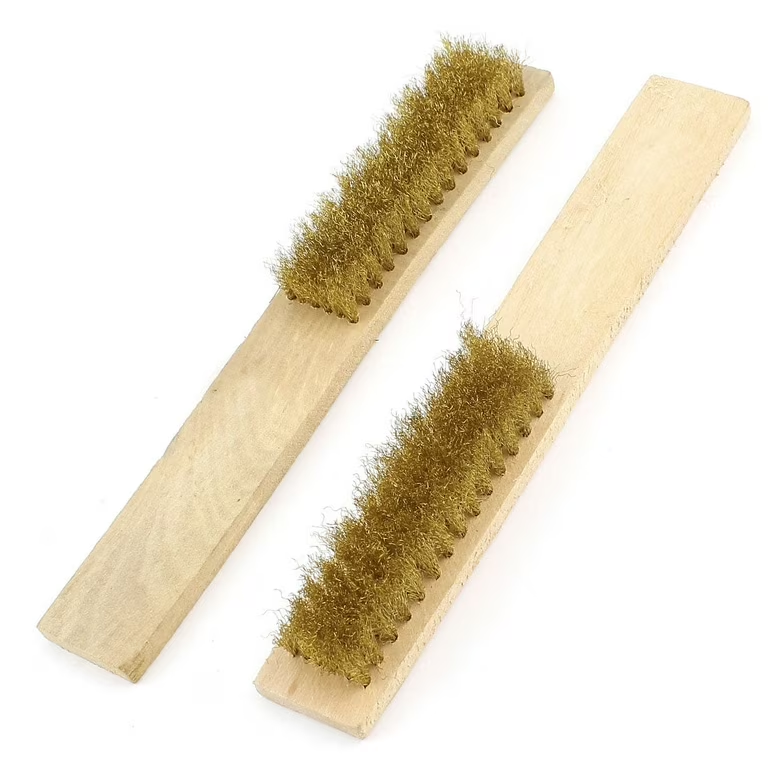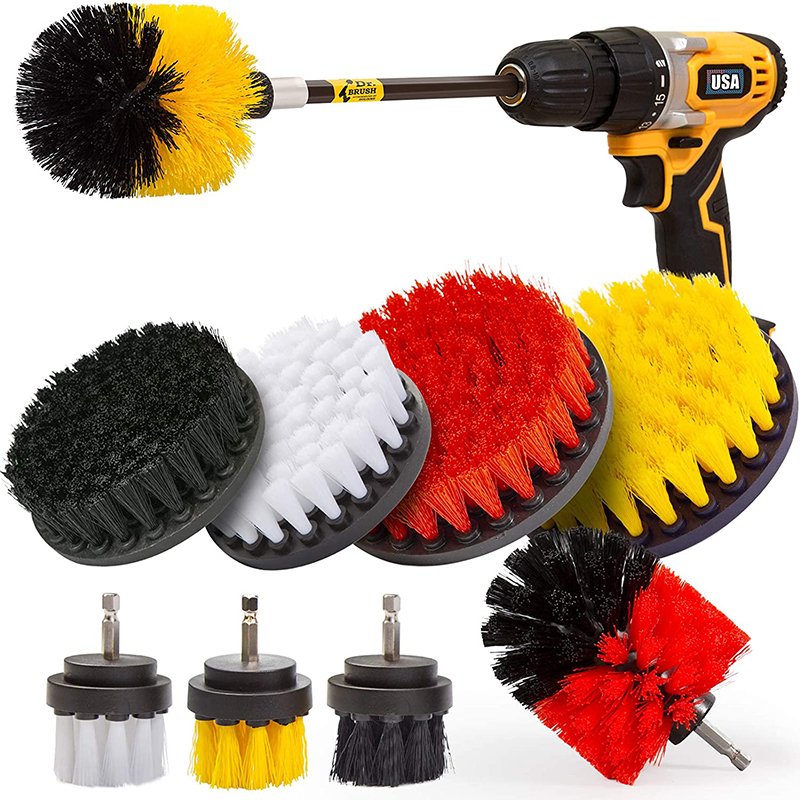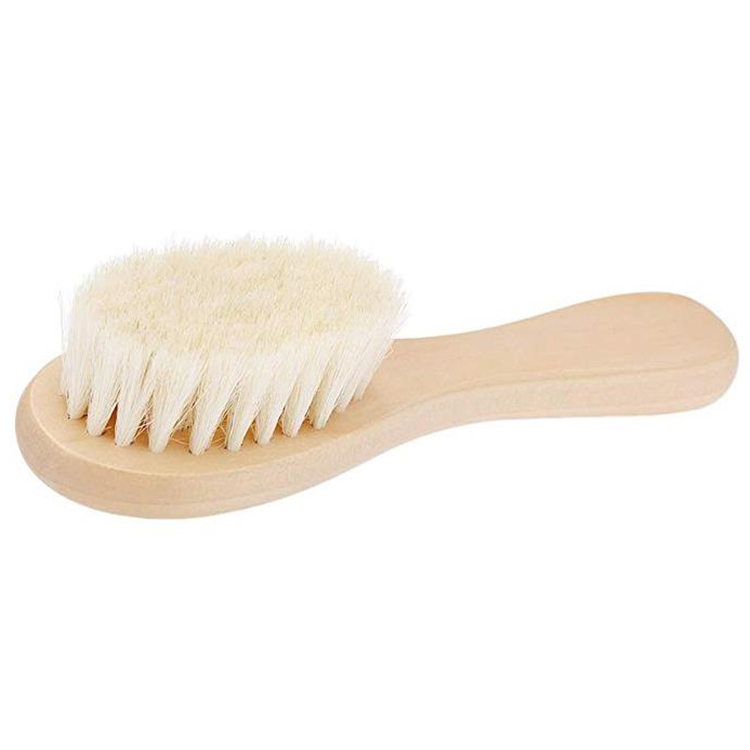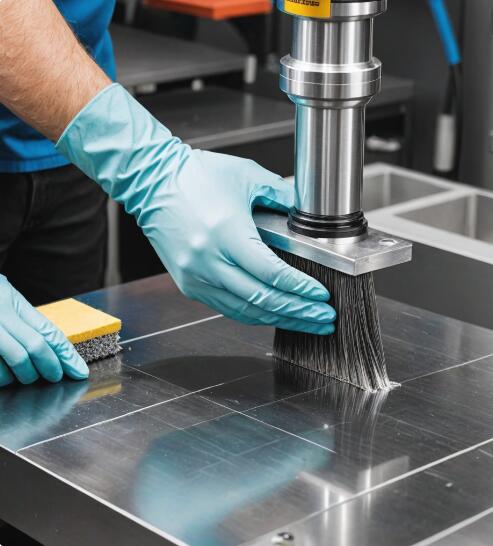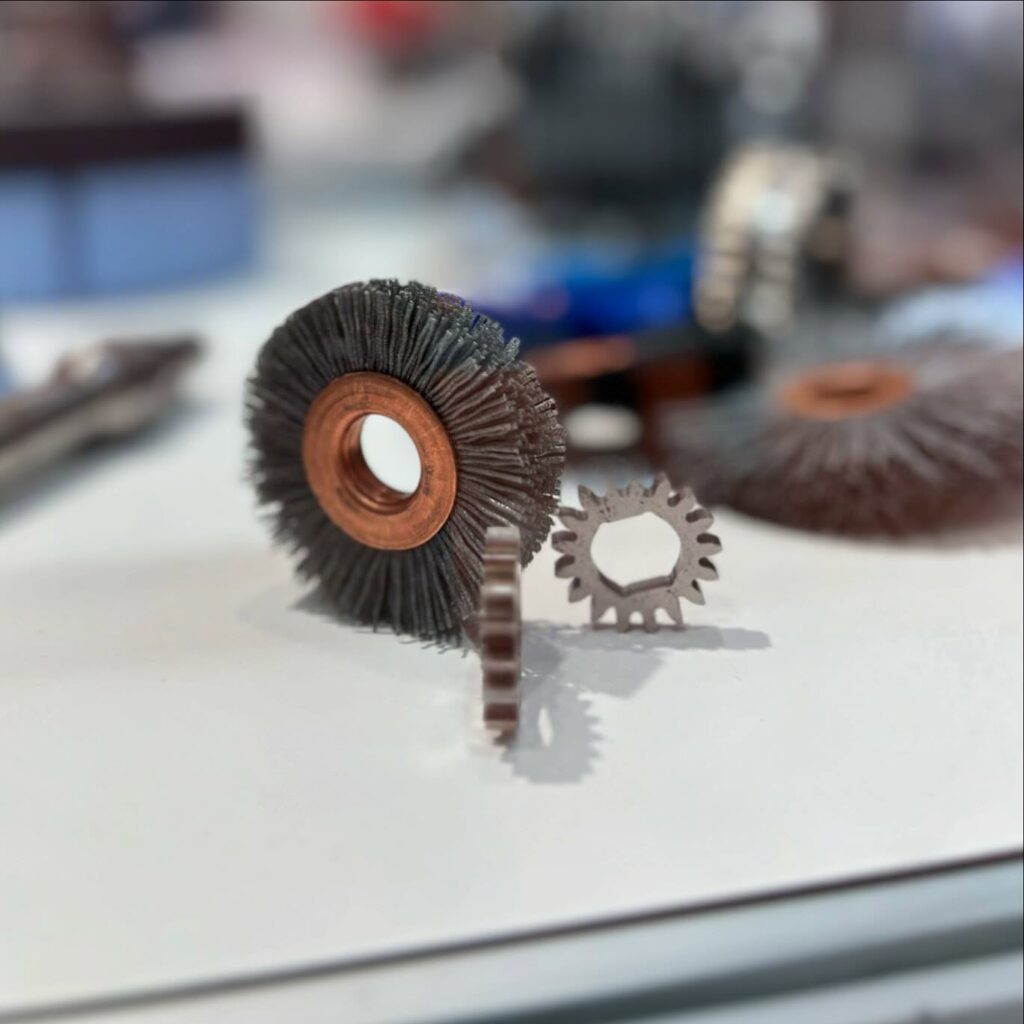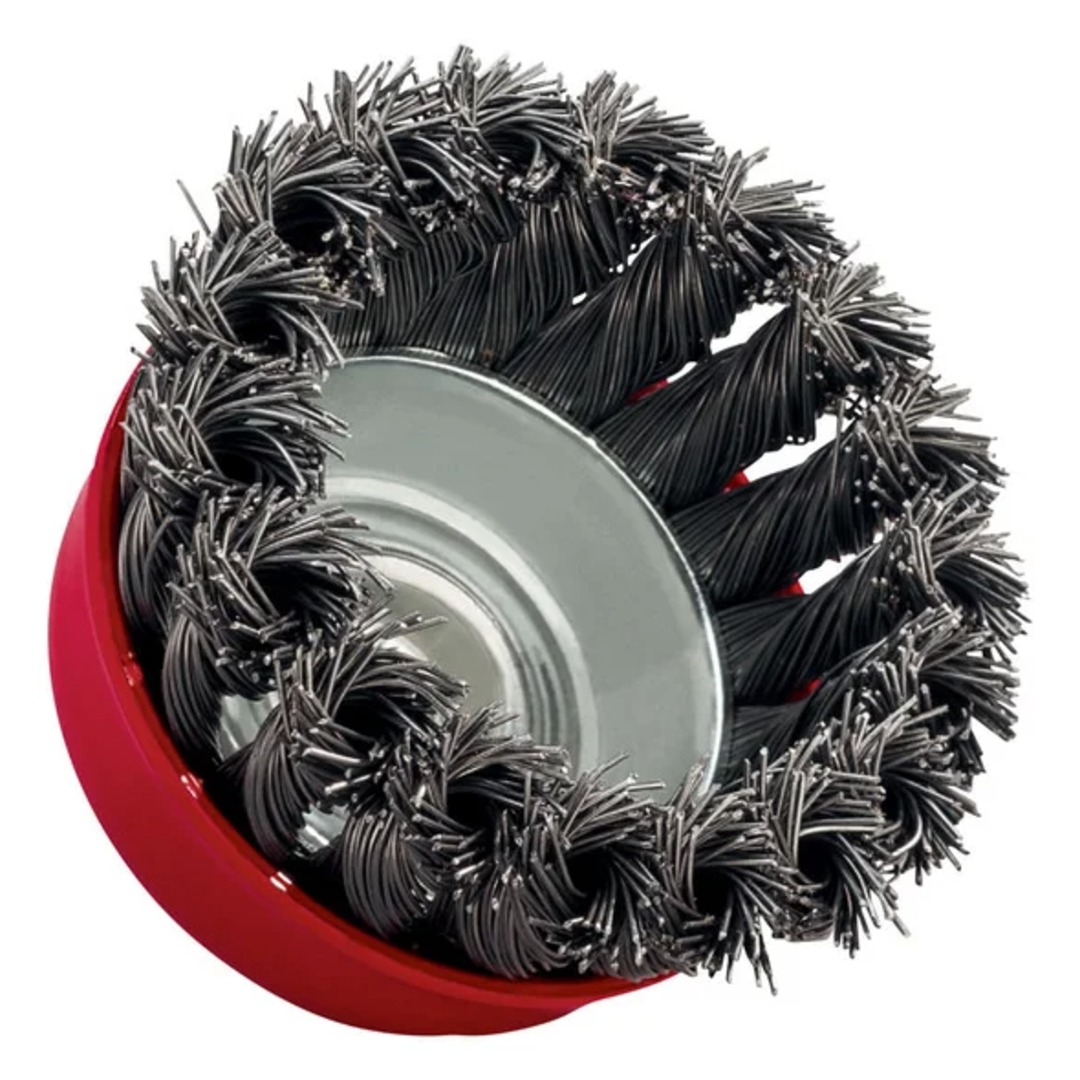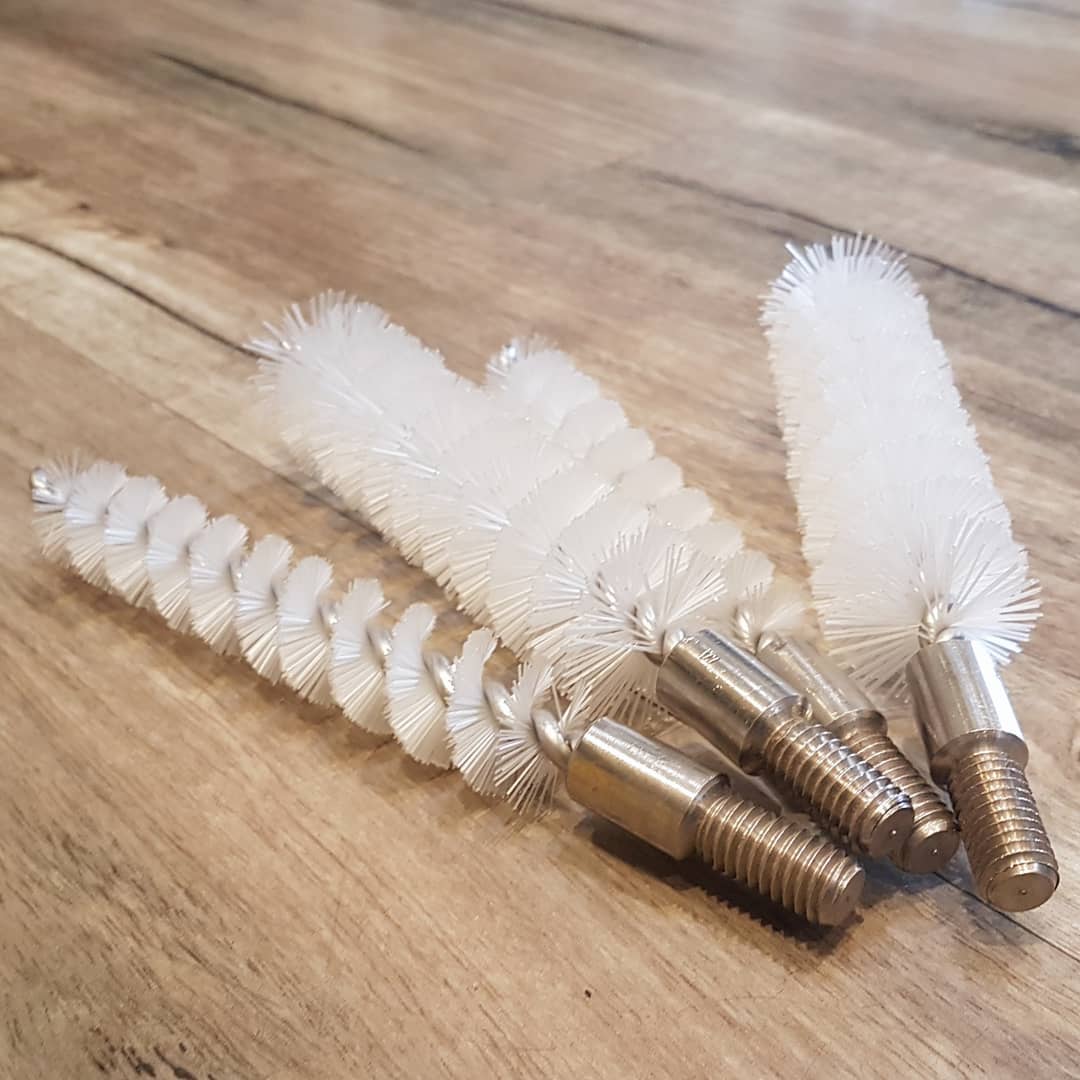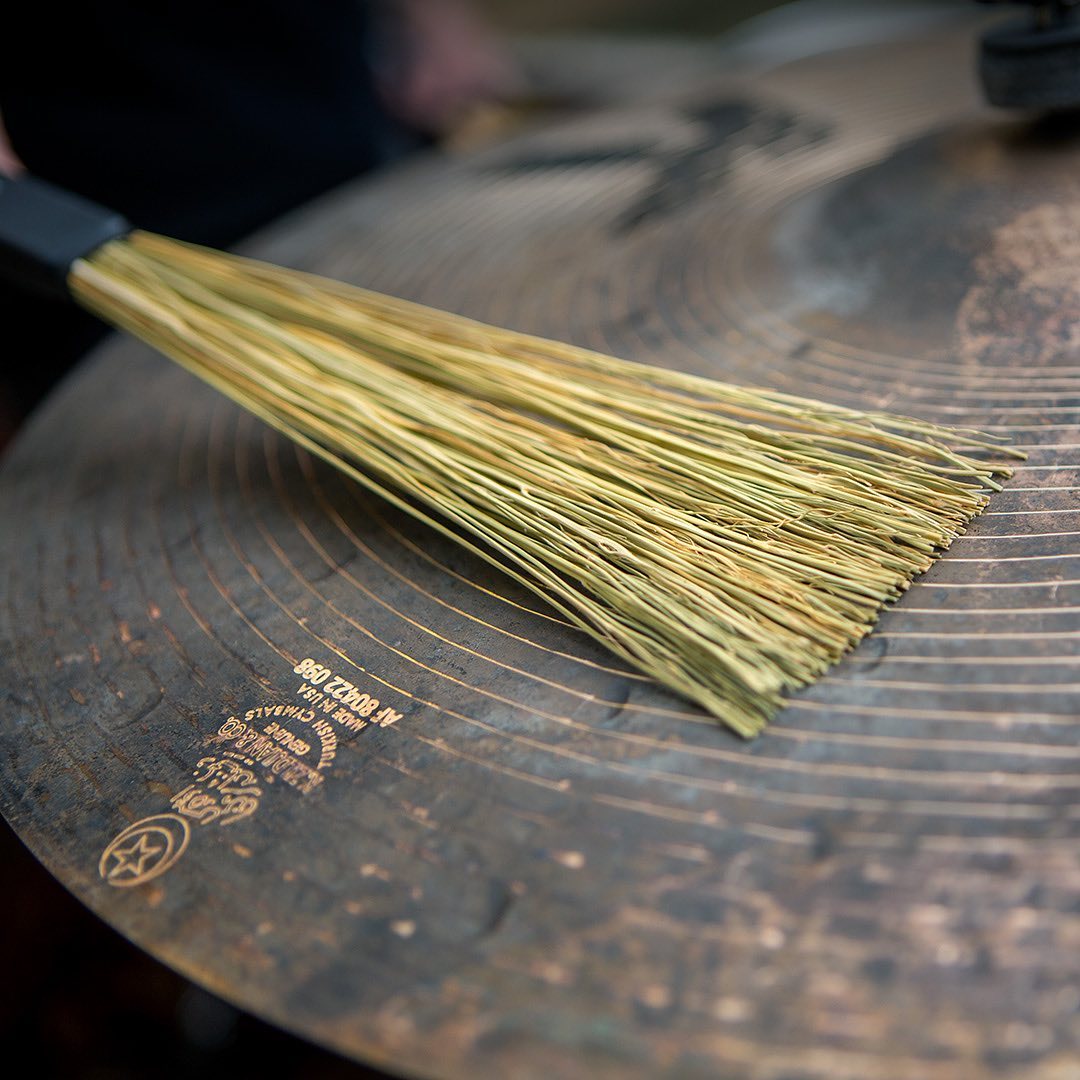Table of Contents
Introduction
In industries ranging from manufacturing to maintenance, selecting the right industrial brush can dramatically influence productivity, product quality, and even cost savings. From removing rust on metal parts to delivering a polished finish on delicate surfaces, brushes play a pivotal role in day-to-day operations. Yet, with so many options—varying materials, shapes, and styles—finding the perfect brush can feel overwhelming. GH Brush, renowned as one of Word’s premier industrial brush manufacturers, knows firsthand how critical it is to match each application with a precisely engineered solution. This guide deconstructs the decision-making process, equipping you with everything you need to specify brushes that enhance efficiency and deliver consistent results.
1. Clarify Your Specific Application Needs
Before diving into brush catalogs, take a moment to outline exactly what you need the brush to accomplish. Industrial brushes fulfill tasks such as:
- Heavy-duty cleaning: Stripping paint, removing scale, or tackling weld spatter.
- Deburring: Smoothing sharp edges on machined components.
- Surface finishing: Polishing or texturing metal, wood, or composite parts.
- Material handling and coating: Applying lubricants, adhesives, or paint uniformly.
Each of these operations demands different bristle stiffness, filament material, and brush design. For instance, beating stubborn rust or paint typically requires rigid, abrasive bristles, whereas fine polishing calls for softer, non-abrasive filaments. In addition to task type, consider:
- Substrate composition (e.g., stainless steel, aluminum, plastic, wood).
- Operating environment (temperature extremes, exposure to chemicals, moisture).
- Desired surface finish (mirror-like sheen, matte texture, uniform coating).
By listing the precise outcome and environmental constraints, you’ll narrow down which brush families and materials logically suit your operation.
2. Select the Ideal Bristle Material
The material used for brush filaments directly influences durability, chemical compatibility, and cleaning or finishing performance. Below are the most common filament types, along with their strengths and recommended uses:
- Stainless Steel Filaments:
- Strengths: Exceptional resistance to heat, corrosion, and abrasive wear.
- Applications: Metal deburring, weld scale removal, heavy paint or rust stripping in manufacturing, metal-fabrication, and automotive industries.
- Nylon Filaments (Synthetic Polymers):
- Strengths: High abrasion resistance, tolerates mild chemicals, retains resilience over time.
- Applications: General-purpose cleaning, light scrubbing in food processing, pharmaceutical manufacturing, and electronics assembly.
- Polypropylene (PP) Filaments:
- Strengths: Outstanding chemical resistance (acids, alkalis, solvents), moisture-proof, cost-effective.
- Applications: Wet‐environment cleaning, chemical processing, wastewater treatment, surface prep where aggressive solvents are involved.
- Natural Fiber Filaments (e.g., Horsehair, Tampico, Tampico Mix):
- Strengths: Soft, non-abrasive, excellent for delicate surfaces, biodegradable.
- Applications: Woodworking for fine finishing, polishing artisanal pieces, light dusting of sensitive electronics.
Choosing the wrong filament can lead to premature wear, surface damage, or ineffective cleaning. Evaluate the hardness required (soft versus stiff), chemical exposures, and substrate sensitivity to ensure you pick the optimal material.
3. Match Brush Shape and Construction to the Task
Brush geometry dictates how the filaments contact and interact with the workpiece. Below are common brush configurations and their ideal use-cases:
- Wire Wheel Brushes:
- Design: Bristles arranged around a circular hub (wheel).
- Use-Case: Aggressive cleaning, removing scale/rust, weld preparation on flat or curved metal surfaces.
- Disc Brushes:
- Design: A flat disc or plate with densely packed filaments—ideal for high-speed grinders or bench tools.
- Use-Case: Removing coatings (paint, oxides), surface abrasion in confined or flat areas.
- Cylinder (Roller) Brushes:
- Design: Cylindrical core wrapped with bristles in spiral or staggered patterns.
- Use-Case: Continuous surface treatment in conveyor lines (e.g., coating, cleaning, or smoothing), industrial processing lines.
- Twisted-Wire Tube Brushes:
- Design: Filaments twisted between two wires into a tube shape, offering flexibility.
- Use-Case: Cleaning inside pipes, tubes, cylinders, and other hard-to-reach enclosures.
- Strip Brushes:
- Design: Bristles set into a U-channel or rectangular holder.
- Use-Case: Sealing gaps, dust control, sweeping debris along flat surfaces.
- Abrasive Bristle Brushes:
- Design: Filaments impregnated with abrasive grains (aluminum oxide, silicon carbide).
- Use-Case: Light deburring, blending, satin finishing, or cleaning delicate components without harsh wire brushes.
Selecting a geometry that aligns with the shape of the workpiece and the motion of the equipment ensures consistent contact and uniform results. If you’re processing cylindrical parts on a lathe, a wheel brush might be perfect; for inside-diameter cleaning, a twisted-wire tube brush is best.
4. Prioritize Quality and Durability
Not all brushes are created equal. A high-grade brush from a trusted manufacturer like GH Brush will:
- Use premium raw materials: High-tensile filaments, corrosion-resistant cores, and heat-treated wire supports for maximum longevity.
- Undergo rigorous testing: Performance validation under simulated production conditions—temperature extremes, abrasive loads, and chemical exposures.
- Ensure consistent manufacturing tolerances: Uniform bristle density and secure anchoring to prevent filament loss during operation.
Investing in brushes built for rigorous environments reduces downtime. Inferior brushes may fray quickly, lose bristles, and force you to stop production for unscheduled replacements. A well-engineered brush can last multiple times longer than a budget alternative, ultimately saving money.
5. Verify Compatibility with Existing Equipment
Brushes must integrate seamlessly with your machines. Common compatibility factors include:
- Shaft/Arbor Diameter: Ensure that the brush’s bore size matches your spindle or arbor (e.g., ½″, ⅝″, ¾″, 1″). An ill-fitting bore can lead to vibration, wobble, or slippage.
- Mounting Method: Some brushes are center-mounted (e.g., bore to fit onto a shaft), while others are flange-mounted or attach via screw threads. Check whether your machine expects a threaded mandrel-type brush, a direct bore mount, or a flange plate adapter.
- Rotational Speed (RPM) Rating: Each brush carries a maximum safe operating speed. Running a brush above its rated RPM can cause filament flail-off or structural failure.
- Tool Interface: For handheld power tools (grinders, drills), ensure that the brush’s arbor adapter fits correctly and that any locking collars or flanges align with the tool’s spindle.
Always cross-reference manufacturer specs and measure your machine interfaces before ordering. If there’s any uncertainty, consult GH Brush’s technical team or supply schematics so they can recommend the correct brush size and fitting.
6. Factor in Cost-Effectiveness and Return on Investment (ROI)
While it may be tempting to purchase the cheapest brush on the market, low-cost products often compromise on filament quality, core materials, and manufacturing precision. Here’s how to evaluate total cost:
- Initial Purchase Price vs. Lifetime Cost: A premium brush will almost always outlast its cheaper counterpart by several production cycles. Divide the purchase price by its service hours to calculate a cost-per-hour metric.
- Downtime Costs: Frequent brush changes interrupt production. Estimate how much machine downtime costs per hour and compare this to any savings from a cheaper brush.
- Quality of Results: Inferior brushes might leave scratches, fail to remove all burrs, or apply inconsistent finishes that require rework—adding to labor and material costs.
- Maintenance and Replacement Frequency: Durable brushes designed for the intended application reduce the frequency of purchases and labor involved in swapping brushes.
When you account for all these factors, investing in a high-quality brush often delivers a lower overall cost of ownership.
7. Leverage Expert Consultation and Custom Solutions
If you’re uncertain about the exact brush configuration you require, tap into expert resources:
- Technical Consultations: GH Brush provides one-on-one guidance—reviewing process flow, material types, and desired outcomes to recommend an off-the-shelf or modified brush.
- Custom-Built Brushes: Whether you need a unique filament blend, specific bristle density, or a brush built to non-standard dimensions, custom manufacturing can optimize performance. For instance, a blend of stainless steel and nylon filaments in a single brush can address both heavy debris removal and light finishing in one pass.
- Prototyping and Testing: Many top manufacturers will produce a sample batch for trial runs before full production, ensuring that your chosen brush meets real-world demands.
Expert advice saves both time and resources, preventing you from guessing at brush choices that may underperform.
8. Embrace Environmental and Sustainability Considerations
Modern industries increasingly prioritize eco-friendly practices. When selecting brushes, keep sustainability in mind:
- Recyclable or Reclaimed Materials: Some brushes use recycled steel wire or biodegradable natural fibers that can be composted or recycled at end of life.
- Extended Service Life: Durable brushes that require fewer replacements reduce landfill waste.
- Low-Hazard Filaments: Certain synthetic filaments can off-gas minimal volatile compounds and are color-coded to comply with food-safe regulations (FDA-approved nylon, for example).
- Responsible Disposal Programs: Check if the manufacturer offers a take-back or recycling program for used brushes, especially those with mixed materials.
Choosing brushes aligned with your company’s green initiatives not only appeals to eco-conscious clients but also helps meet corporate social responsibility goals.
9. Maintenance and Care Tips
Proper upkeep extends the life of your industrial brushes and sustains peak performance. Consider these best practices:
- Regular Inspection:
- Visual checks for bristle wear, fraying, or missing filaments.
- Ensure that the brush remains balanced to avoid vibrations—uneven wear on one side is a red flag.
- Cleaning After Use:
- Remove debris, dust, and contaminants after each shift. For metal brushes, use compressed air or a gentle solvent spray if grease or resin has accumulated.
- For natural-fiber brushes, wipe bristles with a damp cloth to remove dust, then air-dry completely to prevent mold.
- Correct Storage:
- Store brushes in a dry, temperature-controlled environment away from direct sunlight. UV exposure can weaken nylon or polypropylene over time.
- Hang wheel brushes by their bore on hooks to preserve circular shape and prevent bristle deformation.
- Rotate Brushes Evenly:
- In large production setups, create a rotation schedule so that no single brush endures continuous peak loads. This balances wear across multiple brushes and ensures consistent product quality.
- Replace When Necessary:
- As soon as bristle lengths fall below recommended guidelines (typically 50% of original length for high-precision tasks), replace the brush. Operating with worn filaments increases the risk of surface damage or incomplete processing.
Implementing a proactive maintenance routine not only protects your investment but also safeguards against subpar finishes and unexpected downtime.
10. Comparative Analysis of Popular Brush Types
Below is a concise overview comparing four widely used brush types with respect to primary attributes:
- Stainless Steel Wheel Brush:
- Pros: Ultra-durable, aggressive cleaning, ideal for highest heat or corrosion-resistance needs.
- Cons: Can leave micro-scratches on softer metals; not suited for delicate finishes.
- Nylon Knot Brush:
- Pros: Balanced stiffness, good chemical resistance, long service life, suitable for both cleaning and light finishing.
- Cons: Less aggressive than steel; may not handle very heavy burrs.
- Polypropylene Strip Brush:
- Pros: Economical option for liquid-based or chemical processes; flexible bristles conform to contours.
- Cons: Lower heat resistance; not ideal for high-speed, heavy abrasive tasks.
- Natural Fiber Flap Brush:
- Pros: Gentle polishing, eco-friendly, great for fine wood finishing and light dust removal.
- Cons: Not suitable for high abrasion; susceptible to moisture-related degradation if not dried properly.
By matching these characteristics against production demands, you can quickly identify a shortlist of brush types that warrant a deeper evaluation.
Conclusion
Selecting an industrial brush is more than picking a random shape from a catalog—it’s a strategic decision that directly impacts product quality, operational efficiency, and long-term costs. By first clarifying your application requirements, then carefully choosing filament materials and brush geometries, you set the stage for reliable performance. Factor in compatibility with your machines, weigh total cost of ownership, and embrace sustainable options to align with corporate goals. For any uncertainty, leverage expert consultation and consider custom solutions to craft a brush tailored to your unique needs. Finally, a simple maintenance routine will prolong brush life and ensure consistent results across every production cycle.
At GH Brush, we pride ourselves on engineering robust, purpose-built industrial brushes—backed by decades of expertise. Whether you need an off-the-shelf solution or a fully customized brushing system, our team stands ready to help you achieve maximum efficiency. Invest in the right industrial brush today, and watch your operations run more smoothly while delivering superior finishes.
Frequently Asked Questions
- How often should I replace an industrial brush?
A brush’s lifespan depends on usage intensity, filament material, and operating conditions. As a rule of thumb, replace filaments when they’ve worn to half their original length or once you notice a significant drop in cleaning or finishing performance. For critical applications, schedule monthly inspections to track wear and ensure optimal results.
- Can I use one brush for both cleaning and polishing?
While some versatile brush types (like nylon or abrasive filament blends) can perform light cleaning and finishing, it’s generally best to use separate brushes tailored to each task. Cleaning brushes typically have stiffer, more abrasive filaments, whereas polishing brushes require softer, non-abrasive filaments to avoid surface scratches. Using dedicated brushes ensures each job is done efficiently and prevents cross-contamination.
- Is it worth investing in custom-made brushes?
Absolutely—especially when standard brushes don’t fully meet your application’s demands. Custom brushes can be designed for exact dimensions, specialized filament blends, or unique mounting methods. Although initial costs may be higher, the enhanced performance, reduced downtime, and longer service life often translate into a lower total cost of ownership over time.

